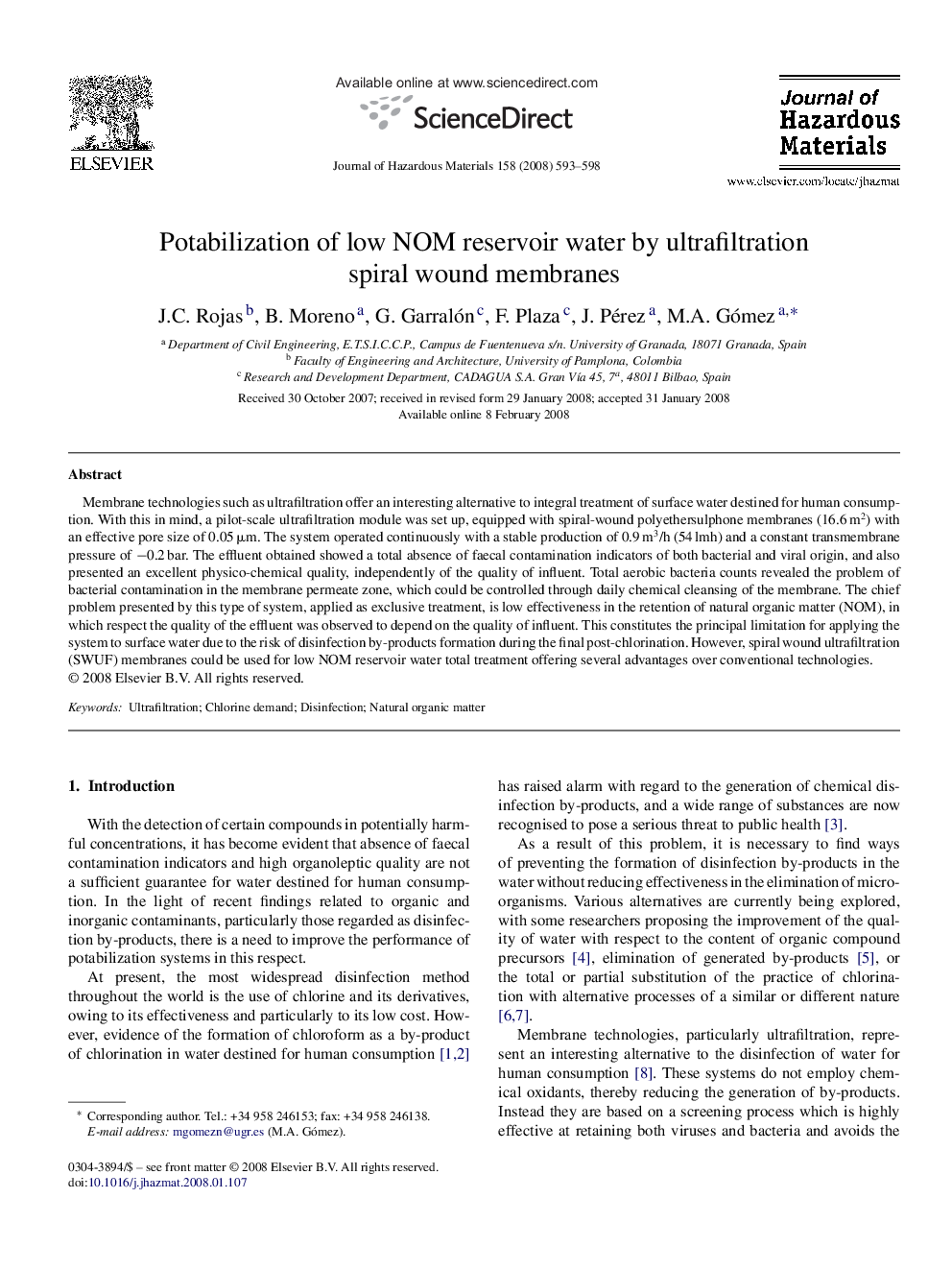| Article ID | Journal | Published Year | Pages | File Type |
|---|---|---|---|---|
| 583327 | Journal of Hazardous Materials | 2008 | 6 Pages |
Abstract
Membrane technologies such as ultrafiltration offer an interesting alternative to integral treatment of surface water destined for human consumption. With this in mind, a pilot-scale ultrafiltration module was set up, equipped with spiral-wound polyethersulphone membranes (16.6 m2) with an effective pore size of 0.05 μm. The system operated continuously with a stable production of 0.9 m3/h (54 lmh) and a constant transmembrane pressure of â0.2 bar. The effluent obtained showed a total absence of faecal contamination indicators of both bacterial and viral origin, and also presented an excellent physico-chemical quality, independently of the quality of influent. Total aerobic bacteria counts revealed the problem of bacterial contamination in the membrane permeate zone, which could be controlled through daily chemical cleansing of the membrane. The chief problem presented by this type of system, applied as exclusive treatment, is low effectiveness in the retention of natural organic matter (NOM), in which respect the quality of the effluent was observed to depend on the quality of influent. This constitutes the principal limitation for applying the system to surface water due to the risk of disinfection by-products formation during the final post-chlorination. However, spiral wound ultrafiltration (SWUF) membranes could be used for low NOM reservoir water total treatment offering several advantages over conventional technologies.
Related Topics
Physical Sciences and Engineering
Chemical Engineering
Chemical Health and Safety
Authors
J.C. Rojas, B. Moreno, G. Garralón, F. Plaza, J. Pérez, M.A. Gómez,
